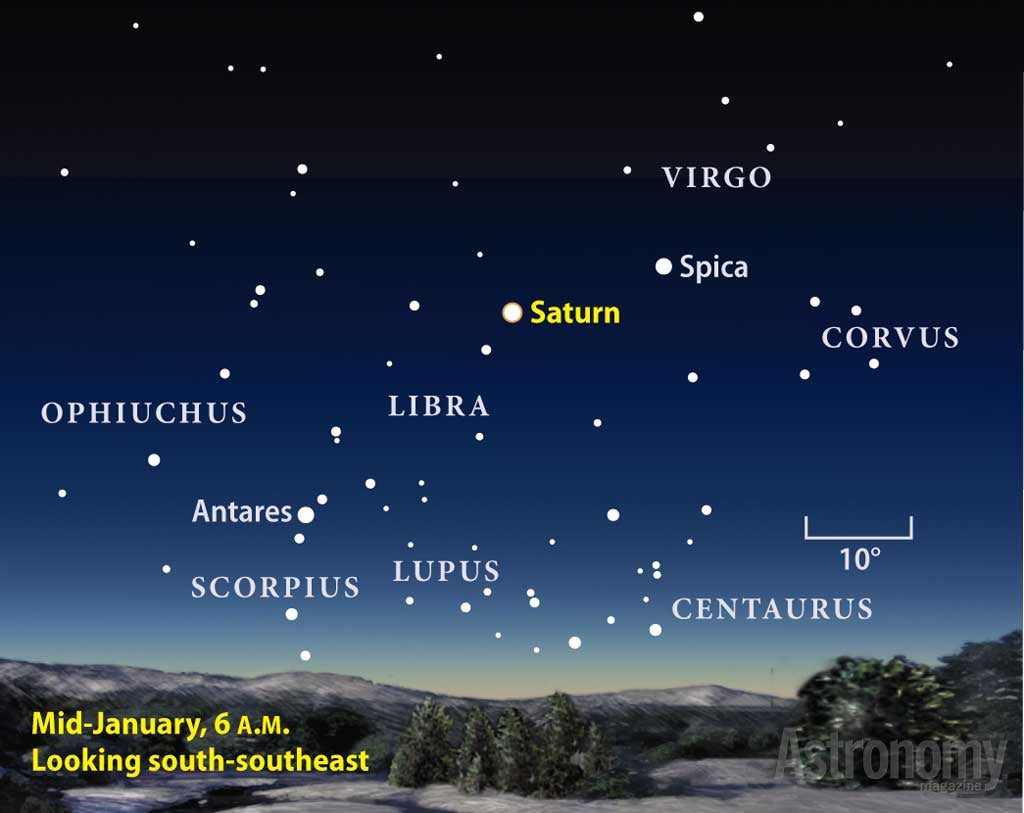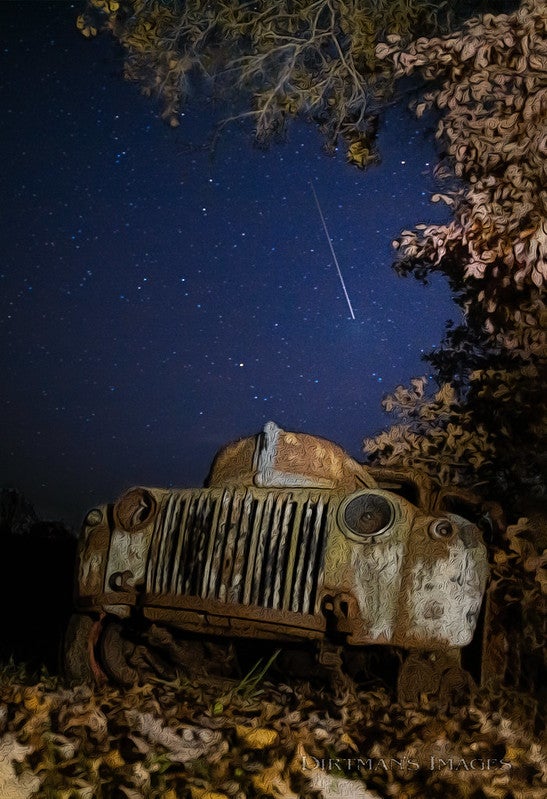Fans of Saturn could ask no more of it this month. On April 15, the ringed world lies opposite the Sun in our sky — a position known as opposition — meaning fantastic views of it will last all night. The planet rises in the east at sunset, hangs within the constellation Virgo the Maiden, and sets at sunrise. And, because every opposition occurs when Earth lies closest to Saturn, the planet appears bigger and brighter than at other times, peaking at a magnitude of 0.2.
“Looking at Saturn through a telescope never disappoints,” says Astronomy Senior Editor Michael E. Bakich, “but it’ll be especially stunning this month.” The planet’s disk will appear noticeably flattened due to the gas giant’s speedy rotation. Be sure to check the world for any storm systems — last year observers spotted a distinct white spot that grew more elongated as time passed. And Saturn’s unique ring system will tip about 14° to our line of sight, allowing for a great view of its fine details. “The rings alone will make you glad you set up your telescope,” says Bakich. On the 15th, the rings will span more than double the width of the planet’s disk.
Although it will share the celestial spotlight with Mars, Jupiter, and Venus throughout the night, spotting Saturn in Virgo, near blue-white Spica, should be no trouble. The best views will occur around 1 a.m. local Daylight time, when the planet hits maximum altitude, due south and about halfway to the zenith (directly overhead) from midnorthern latitudes. Its disk and rings should show up clearly through even the smallest telescopes.
Observers will require slightly larger scopes to spot another part of the saturnian system: its variety of moons. The biggest and brightest is Titan, which orbits Saturn once every 16 days and will appear due south of the planet the evenings of April 2 and 18 (and due north eight days later). With a 4-inch scope or better, Tethys, Dione, and Rhea will show up near the ringed world, all within Titan’s orbit. And an 8-inch or larger scope will reveal Enceladus, which stays near the rings’ outer edges.
“Whether you want to look at a gas giant, its rings, or its moons in detail, Saturn’s got it covered this month,” says Bakich. “Make sure you don’t miss it.”
Fast facts
- Saturn is the second-largest planet in the solar system, and more than 750 Earths could fit inside of it.
- Saturn is the only planet less dense than water, and it weighs only 95 times as much as Earth. This means it would float, if you could find a body of water big enough.
- It takes Saturn about 29 years to orbit the Sun, but a little less than 11 hours to rotate completely.
- During opposition, Saturn lies about 800 million miles (1.3 billion kilometers) from Earth.
- From Saturn, the Sun appears 1 percent as bright as it does from Earth.
- Saturn’s quick rotation flattens it slightly, so its polar diameter is only 89 percent of its equatorial diameter.
- Saturn’s famous rings tilt at an angle of 27.3° with respect to its orbit. They can be as thin as 33 feet (10 meters) thick, and are made almost entirely of ice.
- Saturn is host to a variety of famous moons, including the “Earth-like moon” Titan, the “Death Star moon” Mimas, the “erupting moon” Enceladus, and the “two-faced moon” Iapetus.
- Saturn’s odd weather systems have created an unusually regular hexagon atop the north pole, one of the most curious features in the solar system.
- Video: Easy-to-find objects in the 2012 spring sky, with Richard Talcott, senior editor
- StarDome: Locate Saturn in your night sky with our interactive star chart.
- The Sky this Week: Get your Venus info from a daily digest of celestial events coming soon to a sky near you.
- Sign up for our free weekly e-mail newsletter.











